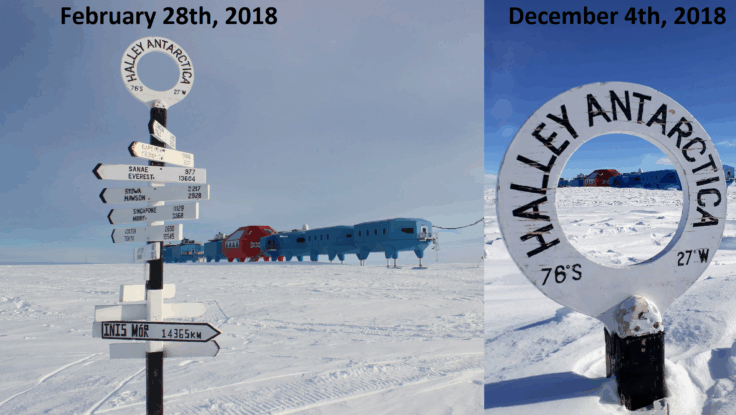Summer fieldwork begins at Halley
The summer field season is underway at British Antarctic Survey’s (BAS) Halley Research Station.
Around 30 science, technical and operational support staff are on site preparing to undertake a suite of scientific and technical projects. Research and support teams will conduct glaciological analysis of the Brunt Ice Shelf; set up a suite of automated scientific instruments; resume Halley’s long-term meteorological and ozone observations that help determine the causes of climate change in the polar region; and support colleagues from the University of Manchester in their search for Antarctic meteorites.
The first tasks were to re-establish life support facilities such as power and heat to living areas, retrieve glaciological data essential to the Brunt Ice Shelf monitoring network, and set up satellite communications to enable teams to keep in touch with colleagues in BAS Cambridge.

With the initial personnel input complete, technical support teams are currently inspecting station infrastructure to determine how they have fared during the winter closure, while the science personnel are restoring meteorological instruments, restarting radiosonde launches in accordance with the International Year of Polar Prediction, and commencing with the Automation Project.

In October 2017 BAS decided, for safety reasons to close its Halley VI Research Station for a second Antarctic winter. Glaciologists continue to monitor the unpredictable glaciological situation on the floating 150-m thick Brunt Ice Shelf.
ENDS